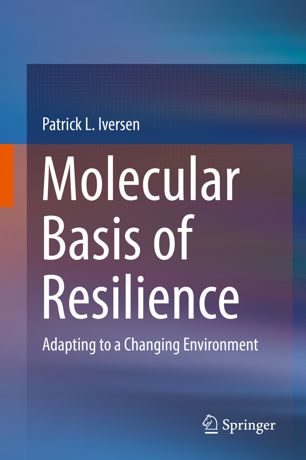

Most ebook files are in PDF format, so you can easily read them using various software such as Foxit Reader or directly on the Google Chrome browser.
Some ebook files are released by publishers in other formats such as .awz, .mobi, .epub, .fb2, etc. You may need to install specific software to read these formats on mobile/PC, such as Calibre.
Please read the tutorial at this link: https://ebookbell.com/faq
We offer FREE conversion to the popular formats you request; however, this may take some time. Therefore, right after payment, please email us, and we will try to provide the service as quickly as possible.
For some exceptional file formats or broken links (if any), please refrain from opening any disputes. Instead, email us first, and we will try to assist within a maximum of 6 hours.
EbookBell Team

4.1
70 reviewsThis book illuminates mechanisms of resilience. Threats and defense systems lead to adaptive changes in gene expression. Environmental conditions may dampen adaptive responses at the level of RNA expression. The first seven chapters elaborate threats to human health. Human populations spontaneously invade niche boundaries exposing us to threats that drive the resilience process. Emerging RNA viruses are a significant threat to human health. Antiviral drugs are reviewed and how viral genomes respond to the environment driving genome sequence plasticity. Limitations in predicting the human outcome are described in “nonlinear anomalies.” An example includes medical countermeasures for Ebola and Marburg viruses under the “Animal Rule.” Bacterial infections and a review of antibacterial drugs and bacterial resilience mediated by horizontal gene transfer follow. Chapter 6 shifts focus to cancer and discovery of novel therapeutics for leukemia. The spontaneous resolution of AML in children with Down syndrome highlights human resilience. Chapter 7 explores chemicals in the environment. Examples of chemical carcinogenesis illustrate how chemicals disrupt genomes. Historic research ignored RNA damage from chemically induced nucleic acid damage. The emergence of important forms of RNA and their possible role in resilience is proposed.
Chapters 8-10 discuss threat recognition and defense systems responding to improve resilience. Chapter 8 describes the immune response as a threat recognition system and response via diverse RNA expression. Oligonucleotides designed to suppress specific RNA to manipulate the immune response including exon-skipping strategies are described. Threat recognition and response by the cytochrome P450 enzymes parallels immune responses. The author proposes metabolic clearance of small molecules is a companion to the immune system. Chapter 10 highlights RNA diversity expressed from a single gene. Molecular Resilience lists paths to RNA transcriptome plasticity forms the molecular basis for resilience.
Chapter 11 is an account of ExonDys 51, an approved drug for the treatment of Duchenne muscular dystrophy. Chapter 12 addresses the question “what informs molecular mechanisms of resilience?” that drives the limits to adaptation and boundaries for molecular resilience. He speculates that radical oxygen, epigenetic modifications, and ligands to nuclear hormone receptors play critical roles in regulating molecular resilience.